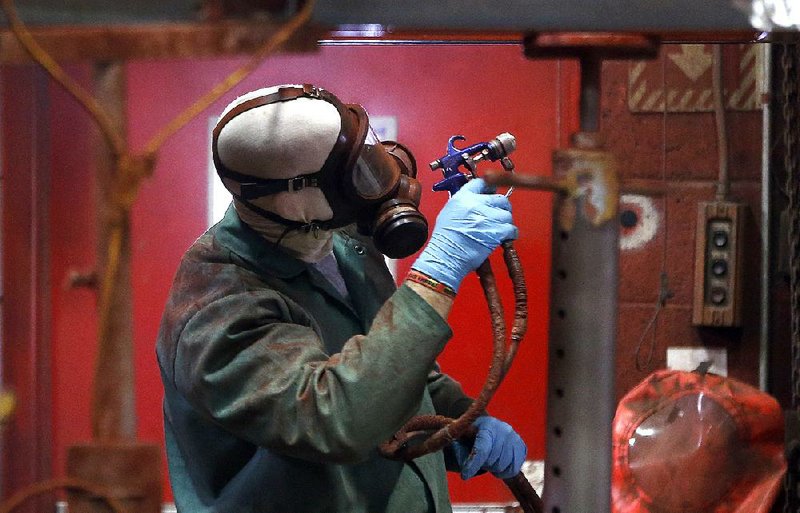WASHINGTON -- Orders to U.S. factories fell again in January but a key investment category showed a gain.
Orders to factories edged down 0.2 percent in January after declines of 3.5 percent in December and 1.7 percent in November, the Commerce Department said Thursday.
In an encouraging sign, orders in a category viewed as a proxy for business investment showed an increase of 0.5 percent in January after declines of 0.5 percent in both December and November.
Orders for durable goods, items expected to last at least three years, showed an increase of 2.8 percent for January, unchanged from the government's preliminary estimate last week.
Orders for nondurable goods, items such as chemicals, paper and food, fell 3.1 percent after a drop of 3.3 percent in December. The nondurable category is being dragged down by steep declines in the price of petroleum products.
U.S. manufacturers have been held back in recent months by weak growth in China, Europe and Japan, which also depressed demand for American exports. A stronger dollar is also hurting American manufacturers because it means U.S. goods are more expensive in overseas markets while foreign products are cheaper in the United States.
The Institute for Supply Management reported Monday that its manufacturing index slipped to a reading of 52.9 in February, down from 53.5 in January. It was the fourth straight drop and the lowest reading since January 2014. Still, any reading above 50 indicates that the manufacturing sector is expanding.
The index had reached a three-year high in August. Economists expect manufacturing will expand further this year but at a slower pace than in 2014.
The trade deficit -- the amount that imports exceeded exports -- widened in the October-December quarter and subtracted 1.1 percentage point from economic growth. Because of the drag from trade and other factors, the overall economy, as measured by the gross domestic product, grew at an annual rate of 2.2 percent in the fourth quarter, down from a torrid pace of 5 percent in the July-September quarter.
Economists remain optimistic that stronger consumer spending, powered by rising employment and wages, will push overall GDP growth above 3 percent this year, marking the fastest pace for the economy in a decade.
In a separate report Thursday, the Labor Department said U.S. worker productivity was weaker than first thought from October through December while labor costs rose at a faster rate.
Productivity declined at an annual rate of 2.2 percent in the fourth quarter, weaker than the 1.8 percent drop that was estimated a month ago. Labor costs rose at a 4.1 percent rate, faster than the 2.7 percent increase first estimated.
Weaker productivity and higher labor costs could spell inflation troubles for the economy. But analysts say that the changes in the fourth quarter are temporary and not an indication that inflation is about to be a problem.
Analysts had expected the revision for productivity would be weaker than the first estimate, reflecting the fact that the government last week revised its estimate for economic growth, as measured by the gross domestic product.
Business on 03/06/2015

